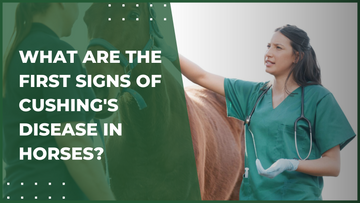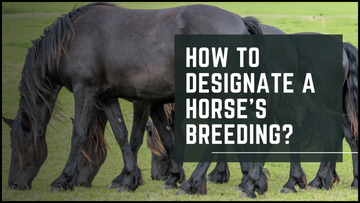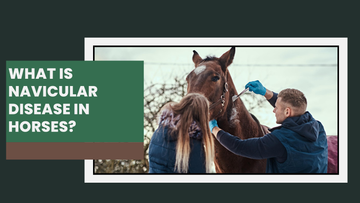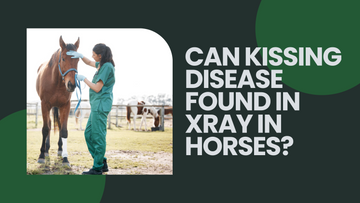Cushing in horses doesn’t show up overnight. It starts with small, easy-to-miss changes that can be mistaken for aging. The first thing a lot of owner's notice is a longer coat that doesn’t shed. Even in warm months, affected horses may still have thick patches of hair.
Another red flag is a shift in muscle tone. Horses with early Cushing’s might now have a lot of muscle along their topline. This change is due to muscle wasting despite a horse eating normally. Their attitude can change too. Horses that were once energetic may seem sluggish or unusually docile. Others drink and urinate more than usual, leaving soaked bedding in the stall.
With the right care, horses with Cushing’s can stay active for years. So, let’s explore what are the first signs of cushing's disease in horses and more about it.
Early Clues: The First Signs You Might Notice
Cushing in horses doesn’t appear overnight. Normal changes can hint at an underlying issue long before the condition becomes severe. So, recognize these early clues in keeping your horse healthy.
1. Delayed Shedding or Thick Coat Growth:
A horse that doesn’t shed its winter coat shows an early sign of trouble. The hair may become curly or appear thicker than usual. Even if shedding occurs, it might be patchy or delayed. This will happen because hormonal imbalances disrupt normal hair growth cycles. But owners often assume it's seasonal variation. Regular grooming can help manage the issue.
2. Thirst and Frequent Urination:
If your horse has PPID, it might start draining water faster in urination. PPID horse is not just a minor habit change. You might also notice damp bedding more frequently or a stronger ammonia smell in the stall. Hot weather or dietary factors can also cause this. So, keep a track of water consumption over several days if this Cushing syndrome in horses remains for a long time.
3. Loss of Muscle Along the Topline:
A once well-built horse developing a sunken topline could be an early sign of Cushing's disease in horses. The body in equine PPID starts breaking down muscle due to hormonal imbalances. At the same time, fat deposits may appear in unusual places, such as above the eyes. This muscle loss can make saddling uncomfortable, and the horse may struggle with movements that were previously easy.
4. Recurrent Laminitis Without a Clear Cause:
Laminitis is a painful hoof condition. But when it occurs repeatedly in a horse with no history of dietary issues or injury, it raises red flags. Cushing’s disease can make horses more prone to inflammation in the hooves due to metabolic changes. Even mild signs, such as sensitivity on hard ground or a slight reluctance to move, shouldn’t be ignored. Regular farrier visits can help detect small changes before they become serious problems.
5. Horse Mood Changes:
Some horses with early Cushing’s disease show personality changes before physical symptoms appear. They might become more irritable, withdrawn, or reactive. A normally social horse may seem distant, while a calm horse might spook more easily. These shifts happen because hormone fluctuations affect both mood and physical comfort.
Diagnosis and Veterinary Assessment
Now that we know what is cushing's disease in horses, let's see how veterinarians confirm it.

1. Clinical Examination and Medical History:
A detailed physical check-up is the first step. The vet looks for coat changes, muscle loss, fat deposits, and signs of laminitis. They’ll also ask about drinking habits and energy levels. If there’s a history of repeated infections or delayed shedding, it raises concerns. Combining equine Cushings symptoms with past health records helps determine if further testing is needed.
2. ACTH Blood Test:
Late stages of Cushing's in horses show higher levels of adrenocorticotropic hormone (ACTH). A blood test measures this hormone and also helps confirm the diagnosis. Since ACTH levels naturally fluctuate, testing during autumn provides more accurate results.
3. TRH Stimulation Test:
If ACTH results are unclear, a thyrotropin-releasing hormone (TRH) stimulation test gives more data. A vet injects TRH and measures ACTH response after a short period. Horses with Cushing’s disease show a much stronger reaction.
4. Measuring Weight and Muscle Condition:
Cushing's disease in horses causes unexpected weight loss, especially along the topline. Regular body condition scoring provides useful insights into disease progression. Comparing past and present photos can highlight changes that may not be obvious day-to-day.
5. Long-Term Monitoring and Follow-Ups:
Once a doctor diagnoses late stages of cushing's in horses, regular blood work and physical assessments help track their progress. Hence, vets may recommend check-ups every few months to manage symptoms effectively.
Prevent Complications of Cushing Disease in Horse
With the right approach, horses can stay active and enjoy their routine for years. Here’s what makes the biggest impact.

1. Consistent Hoof Care:
Regular trims prevent painful overgrowth, and working with an experienced farrier helps spot early warning signs. Soft footing in stalls and paddocks adds extra support.
2. Balanced Diet with Low Sugar Content:
A controlled diet prevents weight loss and keeps energy stable. High-sugar food can worsen insulin resistance. Hence, you must use fiber-rich alternatives like hay and soaked beet pulp. Supplements like magnesium and chromium are also good treatments for Cushing's disease in horses.
3. Medication Management and Routine Testing:
Is Cushing's disease an autoimmune disorder? Yes, and that's why you need blood tests to track hormone levels. Also, check if treatment is working effectively. If new symptoms appear, stick to a consistent schedule with vet checkups.
4. Movement Without Overexertion:
Daily activity will keep your horse's muscles strong, but intense exercise can be draining. Gentle turnout in safe paddocks allows movement without strain. If mobility issues arise, add joint support supplements.
5. Stress Reduction and Comfortable Living Conditions:
A predictable routine helps reduce anxiety. So, keep feeding schedules and provide a dry stall with good ventilation. Since stress weakens immunity, you could also minimize environmental changes and offer companionship.
When to Act: What to Do Next
Noticing unusual signs in a horse can be worrying, but early steps make a real difference. Here's the treatment for Cushing's disease in horses:
1. Schedule a Veterinary Evaluation Immediately:
If a horse starts showing cushing disease in horses symptoms in coat, weight, or behavior, the first call should be to the vet. Blood tests like the ACTH test confirm if hormone levels are off balance. A professional assessment rules out other conditions and sets the stage for a proper treatment plan before symptoms escalate.
2. Start a Hoof Care Routine:
Laminitis risk increases with Cushing’s, so hoof maintenance should become a priority. Schedule trims every few weeks and keep the horse on supportive footing. Any signs of soreness, heat, or reluctance to move should be taken seriously, as untreated Cushing's disease in horses will cause long-term damage.
3. Medication if Recommended:
If the vet prescribes cushings medications to horses, starting it as soon as possible helps bring hormone levels under control. While treatment won’t reverse the condition, it slows progression and improves quality of life. But you can’t leave untreated Cushing's disease in horses.
Cushings Medications Horses
A predictable environment along with the best equine cushing's disease treatment can help manage symptoms better. Hence, you should maintain routines and avoid unnecessary changes in handling. Get Pergolide mesylate or Cyproheptadine as cushing's medicine for horses but after getting a vet's prescription. You should also reduce stress and prevent additional health issues from developing alongside the condition.
Give your horse the best care with The Epic Animal. Manage this syndrome with coat care products and supplements. Shop now!

FAQs:
1. When to euthanize a horse with Cushing’s?
If pain from laminitis becomes unmanageable, weight loss is extreme, or quality of life declines despite treatment, euthanasia may be the kindest option.
2. How to prevent Cushing’s disease in horses?
While not always preventable, keeping weight in check, feeding a low-sugar diet, managing stress, and providing routine vet check-ups can lower the risk.
3. How to diagnose Cushing’s disease in horses?
A vet performs blood tests like the ACTH or TRH stimulation test to check hormone levels. Observing coat, weight, and energy changes also helps with early detection.
4. How to manage Cushing's horses?
Medication, diet changes, regular hoof care, and routine vet visits help control symptoms. Keeping stress levels low and adjusting exercise also support overall health.
5. Can Cushing in horses cause shoulder problems?
Yes, muscle loss and laminitis-related pain are equine cushing's disease symptoms. It can lead to uneven movement, straining the shoulders. Regular farrier care and proper nutrition help reduce discomfort.








